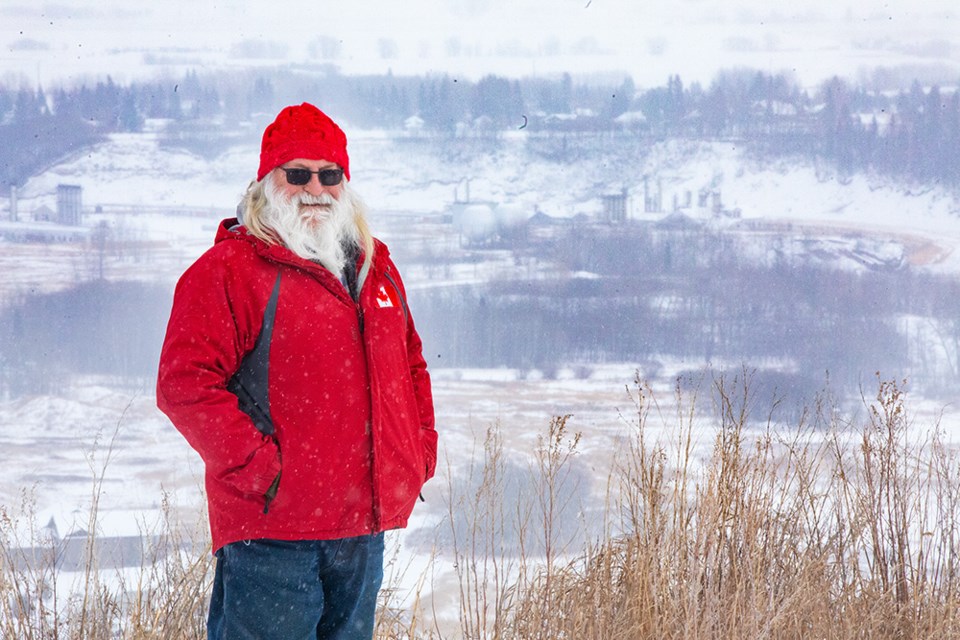Accessing the Foothills’ rich oil and gas history will soon be as simple as the click of a mouse.
The Turner Valley Oilfield Society is partnering with SAIT to create a digital story map with images and narrative descriptions that tell the story of the historical importance of people, places and events that shaped the oilfields in the Foothills.
The society is a group of citizens interested in advancing public knowledge of the area’s unique petroleum discovery and development while honouring the people involved, and their struggles and innovations.
Turner Valley resident Larry Kapustka, society director and chairman of the story map project subcommittee, said it’s time to get this significant history online.
“It’s almost 50 years or so since a real serious effort was made to bring to life some of the stories of this area,” he said. “In the In the Light of the Flares (history book), for example, many families in the area wrote stories about their start in the area.
“What we’ll be doing with this effort is not only revitalizing some of those stories, but making it accessible in some of the ways people access information now.”
Kapustka said the society is working with SAIT’s Capstone Program to build the prototype software package.
It’s also seeking volunteers to provide photographs and written and oral history for its story map.
“We’re hoping to get many people to be active in this to bring these stories to light,” he said.
The story map will consist of hundreds of “pins” people can select to learn more about the history of that geographical area, Kapustka said.
“When we have a photograph we will try to get the co-ordinates that would map onto a base map and then have that image and a description with its importance to the history of this area come up,” he explained. “Many buildings in Black Diamond were initially located around Longview. It’s just to build that whole story and tell about the interesting people that were engaged in this.”
The geographical scope will include the origins of existing Foothills communities, as well as those that since disappeared like Little Chicago, Little Philadelphia and Little New York. The map will also feature the prominence of ranching and agriculture in the area.
Black Diamond planning manager Rod Ross came up with the idea a few years ago when office staff was going through old photographs from the Town’s archives to create plaques for historic buildings in the community.
“We were looking at the photos and trying to locate where they were taken,” he said. “That’s when it occurred to me that this could make for a really neat photo map where the location of the photos are displayed on an online map and the photo and the story comes up.”
Ross said he later mentioned it to the oilfield society as a project they might want to tackle.
“I hope this grows into something that gets photographs out of people’s basements and out of their albums and into the public realm,” he said. “It’s an opportunity for everyone to share their family history and put it up in photographs on a publicly accessible site.”
The project, once complete, will tell the story of how the towns grew up around the oilfields and what life was like in those early years, Ross said.
Among those with history stored in boxes is Kate Dyment, who grew up in Black Diamond and now lives in Calgary.
Dyment, the society’s treasurer, said her grandfather Sam Johnson used to haul oilfield equipment and fluids using a team of horses from the Okotoks train station to Black Diamond and Turner Valley.
She has a copy of an old Calgary Herald article that quotes Johnson’s struggles transporting the material.
“He told about how the road was non-existent and mud was horrible,” she said. “It was quite a journey from Okotoks to Turner Valley in those days.”
Dyment, who, along with her father and brother, also worked in the oilfield, said the online story map will be a great way to keep the area’s oil history alive.
“There are so many people who live in that area who don’t have a clue of the significance to the oil industry,” she said. “It’s really good to put it out there and let people know what’s available in our own backyard. It’s a great way to get the history out.”
“Anybody just coming into the area on holidays and tours can find it on this little story map. It puts a little bit of a significance of the place in front of you so you don’t just drive by and think that might be fun to stop at but you don’t take the time.”
Anyone interested in volunteering to work on the story map project or who has historic photographs, stories and anecdotes about the oilfield in the Foothills can email [email protected] or write to TVOS, PO Box 583, Turner Valley, AB T0L 2A0.
For information about the society go to www.turnervalleyoilfieldsociety.ca




